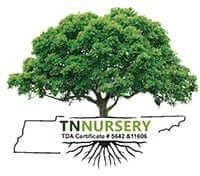The Art of Plant Layering
Share
The Art of Plant Layering
If you’ve ever walked through a garden that made you stop in your tracks, where every bed feels full, the textures are rich, and something is always blooming, there’s a good chance plant layering had something to do with it.
Layering is a basic tenet of garden design that is an essential starting point. It’s not about fancy landscaping software or memorizing scientific names. It’s about how you arrange your plants so they complement each other by height, texture, and form. This creates that full, cohesive look that most of us are going for, whether we realize it or not.
What is Plant Layering, exactly?
At its core, plant layering is just organizing plants in your beds or borders by their mature height, with plants that are taller in the back (or center, if your bed is visible from all sides), medium-height plants in the middle, and lower-growing ones at the front.
But it’s not just about height. Good layering also considers texture (fine or bold foliage), bloom time (so something is always flowering), and structure (think upright, mounding, or trailing habits).
When done well, layering makes a garden feel full of life all season long without being overcrowded. It creates depth and movement. A seamless balance of textures and heights also makes tending to plants easier.
The Basic Layers
Here’s a breakdown of the typical plant layering structure you’ll find in well-designed garden beds:
The Back Layer: This is where your tall, often architectural plants live, adding height and a sense of structure. Think ornamental grasses, shrubs, tall perennials, or even climbing vines if you’re working with a wall or trellis. These plants typically grow three feet or taller and act like the backbone of the bed. Brightly-blooming shrubs such as Forsythia work well as the back layer focal point that blooms early in the season.
The Bulk Middle Layer: This is where our eyes typically settle when viewing a garden. These plants are medium-height and are often the ones that carry the garden through the season with long-lasting blooms. For bulk planting, consider a Perennial Package to fill up this crucial layer of the garden. Phlox, Coneflower, Hostas, and any other mid-size reliable plants are perfect for this section. Middle-layer plants usually range from 18 inches to about 3 feet tall. They provide a bridge between the back and front layers and often carry the strongest color impact.
The Front Layer: This layer ties everything together. These plants help soften the edges of the bed and create a smooth transition to lawn, paths, or other parts of the yard. They also help suppress weeds and conserve moisture. Vinca Minor is a great choice to edge the front of a layered garden, staying low with long-lasting blooms.
Optional Filler Layer: Add seasonal intrigue with plants that hug the ground and fill barren space. Often fragrant, textural, or evergreen, they’re the glue that holds a bed together. Wild Ginger has intriguing foliage and a delightful spicy aroma that not only seamlessly blends the front of the garden together, but also has the added benefit of warding off pests.
Layering Your Own Garden
If you’re intrigued by the idea of making your garden an artful oasis, here are a few steps to get you started on your own garden.
Assess the Space: Take a good look at your garden beds and consider the following: Which direction do they face? How much sun do they get? Are you working with a narrow border against a fence or an island bed that’s visible from all sides? For beds against a wall or fence, place your tallest plants in the back. For island beds, layer from the center outward.
Consider Mature Size: While it’s tempting to plant everything close together so it looks full right away, it is important to resist that urge. Always plan according to the plant’s mature height and spread. This prevents overcrowding and lets each plant shine, allowing the layering to work its magic.
Mix Texture, Color, and Habit: Try pairing plants with contrasting leaf shapes, such as broad Hosta leaves next to feathery ferns, or spiky salvia beside the round blooms of yarrow. Think of your garden as a living collage where shape, size, and season all play a role. Don’t be afraid to repeat colors or plant types across layers to create a sense of flow. Repetition is a simple design trick that helps tie the whole bed together. Consider Bloom Times: Pick plants that bloom at different times so there’s always something happening in the garden. For example, pair spring-blooming tulips in the front with summer-blooming coneflowers in the middle and tall fall grasses at the back for year-round interest.
Endless Combinations
Plant layering is one of the most fun and rewarding ways to design a garden. Not only will the beds be full of life all season long, but the mesh of different plant sizes, textures, and bloom periods creates a satisfying sense of accomplishment as a gardener.
There’s no strict formula. Layering invites creativity. It’s a process of experimenting, adjusting, and discovering what feels right in your own space.
Over time, you’ll start to notice which combinations thrive and which ones need a little editing. And before long, your garden starts to grow into that full, flowing look. Something that feels not only beautiful, but completely your own.
